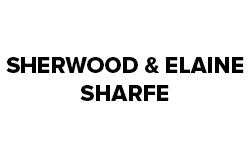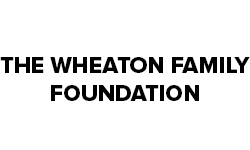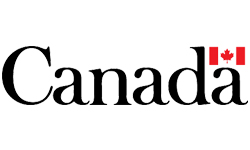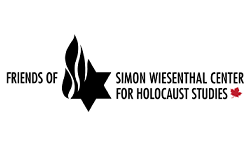GRADE 2 CITIZENSHIP STUDIES ENGAGED CITIZENS
Part A: Curricular Connections and Background
BROAD AREA OF CITIZENSHIP
Engaged Citizens question, critically examine, advocate, and defend rights and responsibilities of a democracy on multiple levels. They work to understand the issues, overt and hidden within citizenship challenges and develop appropriate action plans to address those issues.
Rules, regulations, and laws are the primary means by which society organizes and brings structure to itself. Students will consider the relationship between rights and responsibilities in setting and following rules. They will examine the effects of rules and begin to appreciate the responsibilities of the governing body that developed those rules/structures. Finally students will become conscious of the responsibility that citizens have to support and contribute to varying levels of governance.
OVERVIEW AND DESIRED RESULTS OF CITIZENSHIP STUDY
Students will work to understand the different impacts of rules on people and will strive to understand the underlying purpose behind the rule.
Students will examine the various levels of government to understand the responsibilities of different governments and understand the decision making process. They will also examine the processes for raising questions and implementing change with a variety of governmental structures.
As engaged citizens strive to understand issues from a variety of viewpoints, they will also begin to explore different ways to solve problems and examine and practice actions that contribute to peace and order. Students will be encouraged to try to understand a point of view that is different from their own.
ENDURING UNDERSTANDINGS OF CITIZENSHIP STUDY
Grade 2 students will continue to understand the decision-making process and explore the rights and responsibilities associated with belonging to society.
Students will continue to learn about actions and practices that contribute to peace and order in society and the governance structures that create those rules. Rules will be examined to determine their purposes and the implications of the decision. In addition, students will analyze how decisions are made and consider the scope of consequences of decisions. As students learn how rules are made, they will also learn the processes for changing rules. Students will appreciate that people can have different points of view on the same topic.
- Enduring understandings are the big ideas that stimulate thinking, guide the inquiry and are linked to outcomes.
- Essential questions point to the “big ideas’ in the inquiry and should be considered and reconsidered as the inquiry progresses.
- Answers to these questions form the evidence of learning at the end of study.
Students will use information to understand that:
- Actions, behaviours, and relationships are learned and affected by the past.
- Events and ideas from the past influence the present and can influence and serve as models of how to live as a contributing citizen.
- People develop rules so that we can live together peacefully.
- Rules have differing levels of impact so people who make rules need to consider the individual good and common good.
- Diversity can have a variety of impacts and can impact points of view.
- Individuals have the power to affect others and make a difference.
- Canada has a long relationship with First Nations Peoples through treaty relationships.
- Decisions have far-reaching effects, so it is important to think about the choices we make.
- Active participation leads to belonging and symbols can support belonging.
- People are connected to each other and to their environment and have a responsibility to take care of the world.
Throughout the year of study, students are learning that models, multidimensional and two dimensional, can represent real things.
KNOWLEDGE AND SKILL DEVELOPMENT
Students will know:
- How rules are made.
- Why rules are made.
- How and who enforces rules.
- What “common good” means.
- Simple process to solve disputes.
- Students will develop the ability to:
- Categorize
- Make comparisons
- Identify consequences of rules or lack of rules
- Look for alternate points of view
ESSENTIAL QUESTIONS
- What makes a rule fair?
- Why are rules different from place to place?
- How do rules help people live peacefully together?
- How do rules change?
- How do I become an involved citizen?
Essential Questions are open-ended questions that are continually revisited, encompass concepts that students will explore throughout the unit of study, form the evidence of understanding and frame the assessment at the end of the study.
CURRICULUM OUTCOMES AND INDICATORS
Post student friendly outcomes throughout the inquiry and continually reference to remind students of the learning goals. .
Outcomes: (Sask. Curriculum/Student Friendly)
PA2.1
Analyze how decisions are made within the local community.
Indicators:
- Review examples of communities to which students belong, and identify leaders in those communities (e.g., sports teams, artistic groups, school clubs, classroom, school, family).
- Give examples of leadership in the local community, and describe ways leadership is demonstrated (e.g., mayor, reeve, chief, Elders, community volunteers).
- Identify decision makers in the local community in government, economic, community, faith, and cultural organizations, and the roles of each.
- Research processes for decision making in local community organizations, and describe similarities and differences.
- Research formal decision-making process for governance of the local community.
PA2.2
Assess and practice various approaches to resolving conflicting interests within the community.
Indicators:
- Recognize that the existence of conflicting interests does not necessarily result in conflict, and that harmonious communities resolve conflicting interests in peaceful ways.
- Review processes for resolving conflicting interests in the classroom and school.
- Identify possible sources of conflict in groups to which students belong, and in the community.
- Identify and describe diverse viewpoints and perspectives in the local community.
- Identify ways of maintaining safety and harmony within communities (e.g., police, firefighters, signage).
- Investigate processes for resolving conflicting interests in the local government and community organizations.
- Identify attributes of successful approaches to resolution of conflicting interests.
- Apply successful approaches to resolving conflicting interests in the classroom and school communities.
PA2.3
Analyze rights and responsibilities of citizens in the school and local community.
Indicators:
- Differentiate between the nature of the rights of children and of adult citizens in the community.
- Identify Treaty rights of members of the community.
- Relate the rights of citizens in the community to their responsibilities to the community.
- Identify opportunities for sharing responsibility in the school and community.
Overarching Outcome
DR2.3
Identify physical representations as constructed models of real things./Understand that models, three dimensional and two dimensional, can represent real things.
Indicators:
- Describe constructed features of the local community and examine the value and purpose of such constructions (e.g., bridges, buildings, statues, parks, water systems, roads).
- Locate the local community on a map of Saskatchewan and Canada, and the community’s relative location on a globe.
- Interpret basic features of maps and globes.
- Interpret artistic representations of the land in and around the local community.
© 2024 Concentus Citizenship Education Foundation Inc. All Rights Reserved.









